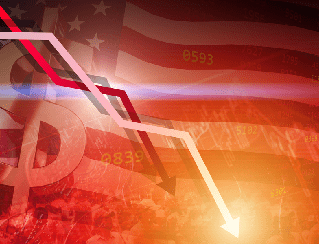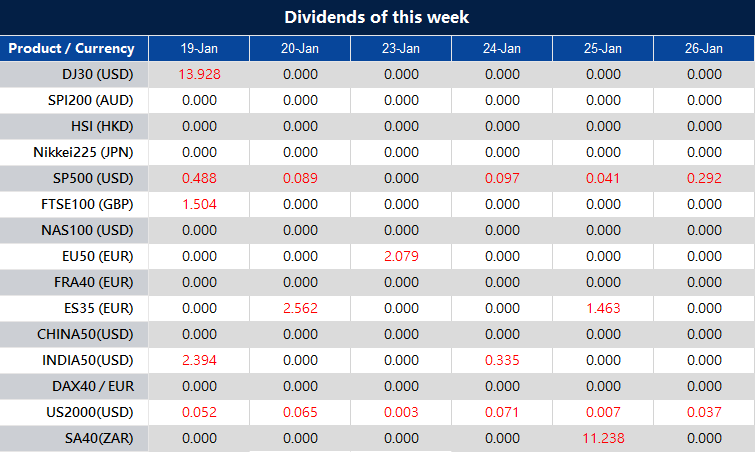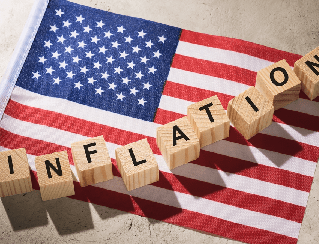The equity market rallied two consecutive days on Monday, as the most influential segment of the US stock is about to kick off earnings in a test of the S&P500’s 12% surge from its October low. Giants like Microsoft Corp. and Texas Instruments Inc. are set to report results that will help shape the fate of a sector that last year faced a reckoning amid higher rates.
The latest notable company to announce layoffs to lower expenses was Spotify Technology SA, which climbed on plans to slash about 6% of its employees. Interestingly enough, despite the positive reaction to the industry’s cost-saving measures, some note that could herald waning demand. It’s also worth noting that among all tech groups, chipmakers were by far the best performers Monday thanks to a call from Barclays Plc upgrading Advanced Micro Devices Inc. and Qualcomm Inc.

The benchmarks, the S&P500 surged 1.19% on Monday, with tech-heavy Nasdaq100 seeing its best two-day run since November. Ten out of eleven sectors of the S&P500 stayed in the positive territory, as Information Technology performed the best among all groups, rising 2.28% daily. It’s also worth noting that the Energy sector, the only sector that stayed in the negative territory, slid 0.2% on Monday. Apart from this, the Dow Jones Industrial Average rose 0.8% and the MSCI world index rallied with a 1% daily gain on Monday.

Main Pairs Movement
The US Dollar has little changed on Monday, as the low market liquidity was caused by the Chinese new year. The DXY index extended the downside tendency in the first half of Monday, falling to a level around 101.6 during the beginning of the UK trading hour. Then, the DYX index rebounded to a level around 102.2 level ahead of the US trading session and closed at 101.9 on Monday.
The GBPUSD slid with 0.15% losses daily, as the UK is falling behind its peers in the race to spur economic growth. Prime Minister Rishi Sunak must act now to boost investment, fix a lack of workers and avoid chaos over post-Brexit rules. Meanwhile, the EURUSD rose by 0.15% for the day, as ECB President Christien Lagarde largely repeated her hawkish stance.
The gold rallied with a 0.26% daily gain, as risk appetite and a weaker US dollar partially offset the impact of higher US yields and the sharp decline in Silver price on Monday. The XAUUSD managed to rebound from a daily low of $1911 marks to above $1930 marks during the American trading session.
Technical Analysis
EURUSD (4-Hour Chart)
The EUR/USD pair edged lower on Monday, losing its upside traction that was witnessed earlier in the day and retreated from the multi-month high above the 1.0900 mark amid the cautious market mood. The pair is now trading at 1.0849, posting a 0.05% loss daily. EUR/USD stays in the negative territory amid renewed US Dollar strength, as the benchmark 10-year US Treasury bond yield recovered above 3.5% and helped the greenback stays resilient against its rivals. On top of that, the Fed officials were also hawkish ahead of the two-week-long pre-FOMC blackout period. Federal Reserve Governor Christopher Waller said that he favours a 25 basis point rate hike at the upcoming meeting and continued policy tightening beyond that. In the Eurozone, the ECB Governing Council member Yannis Stournaras argued that the adjustment of interest rates needs to be more gradual considering the slowdown in the growth of the euro area economy. Therefore, the mixed comments from ECB officials seem to have caused the Euro to lose some strength.

For the technical aspect, RSI indicator 52 figures as of writing, suggesting that the pair could witness some downside movements as the RSI is falling towards the mid-line. As for the Bollinger Bands, the price witnessed fresh selling and dropped towards the moving average, therefore a continuation of the downside trend can be expected. In conclusion, we think the market will be bearish as long as the 1.0912 resistance level holds.
Resistance: 1.0912, 1.1048, 1.1131
Support: 1.0780, 1.0710, 1.0582
GBPUSD (4-Hour Chart)
Financial markets anticipate that the Bank of England will raise interest rates by 0.5 percentage points next month due to high underlying inflation and the unexpected resilience of the economy. In December, inflation dipped slightly to 10.5%, down from 10.7% in November. However, the growth rate of prices charged by service companies increased, which is considered a more accurate indicator of inflationary pressure. Meanwhile, recent data suggests that inflation is under control in the US, resulting in a decrease in the USD index and pushing the GBPUSD to a six-week high. To stay informed, we should keep an eye on the numbers of the UK PMI this Tuesday and the US PCE price index on Friday.

From a technical perspective, although GBPUSD reached a six-month high, the upward momentum did not last long. It fell back to 1.2488 when the relative strength index (RSI) entered the overbought zone. As of writing, it was hovering around 1.2375 in the Bollinger band and it seems no strong resistance below 1.26. Once it successfully breaks the previous high, we could expect to see a firm uptrend.
Resistance: 1.2488, 1.2600
Support: 1.2273, 1.2161, 1.2021
XAUUSD (4-Hour Chart)
During the Blackout Period, US equities open in the green, indicating that investors have a positive outlook. According to CME Fed watch, the market currently expects a 99% chance that the Fed will raise rates by 0.25 basis points, which will also reduce uncertainty in the market and boost risk appetite. Although the price of gold retreated from its nine-month high, it still has strong support at 1,920 and is steadily continuing its upward trajectory. Market participants are now paying attention to the Personal Consumption Expenditure Price Index (PCEPI) this Friday, which measures personal expenditure within a period and serves as an important inflationary signal. If the PCEPI shows that inflation is further cooling down, the expectation of an end to rate hikes will strengthen, which could be disadvantageous to the dollar and potentially drive the price of gold higher.

From a technical perspective, after reaching 1,937, gold failed to continue its upward movement and retreated to 1,911. However, it left a long underlying indication of strong support. It is currently hovering around 1,925. We expect it to move within the Bollinger band. If support at 1,920 holds firmly and the FOMC’s monetary policy aligns with expectations, we believe gold will continue to rise further.
Resistance: 1932, 1952, 1977
Support: 1920, 1900, 1873
Economic Data
| Currency | Data | Time (GMT + 8) | Forecast |
| EUR | ECB President Lagarde Speaks | 01:45 | |
| EUR | German Manufacturing PMI | 16:30 | 47.9 |
| GBP | Composite PMI | 17:30 | 49.3 |
| GBP | Manufacturing PMI | 17:30 | 45.4 |
| GBP | Services PMI | 17:30 | 49.6 |
| EUR | ECB President Lagarde Speaks | 17:45 |











































